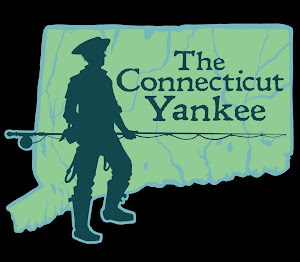Governor Rell issued a drought advisory for the State of Connecticut last week. Many watercourses are at dangerously low levels and cold-water fish have been feeling the heat, literally. There are even reports about a 90% trout die-off in the Housatonic River. The recent soaking and cold front is a step in the right direction, but the region needs more where that came from.
At least one befefit to these conditions is being able to scout fish habitat that is usually underwater. Three of us took advantage of the situation and surveyed a local freshwater oasis that we frequent in autumn for trophy trout and walleye. Instead of fishing we combed the water's edge, which had dropped to where a good cast would have reached under normal conditions. The water level was at least 13 feet below normal, exposing countless crags where many a lure met its match. It was already well picked over when we arrived, but we still scraped together a decent sample of artifcial lures, as well as plenty of lead.
 |
| Some low-water finds (note the 'no-snagg' weight) |
The most notable find, though, came in the form of a massive dead trout that washed ashore. It was a seeforellen brown trout, a strain initially imported from Germany, which thrives in deep, cold lakes like this one. Seeforellens can live to be 15 years old and have been captured in Western Europe up to 68 pounds. Sadly, this specimen looked to be well its way to breaking the Connecticut brown trout record of 16 pounds 14 ounces. We estimated the fish to be well over 12, probably in the neighborhood of 14 pounds. It's not hard to connect the death to the drought conditions, but there is plenty of refuge in the depths here. This beast had to be on in years, so death by natural causes can’t be ruled out either.
 |
| The smell was too bad to get a photo that did this trout justice |
The low water also revealed the rocky makeup that makes it so welcoming to structure-oriented walleye. Under the high-water line were erratic boulders, stone walls and old foundations. Bait is in no short supply either. The walleye and seeforellen, among other fish, thrive on its abundant population of illegally-introduced alewives. Even so, the fishing is known to be notoriously stingy. But knowing the size of the fish and how challenging it is to catch them keeps me going back. Nevertheless, scouting missions like this always divulge new information and can improve angling success in the long run.
 |
| The water's edge is normally above where my father (top) is standing |
 |
| An old stone foundation within casting distance from shore |








































cool foundation....very interesting........waterworker
ReplyDelete